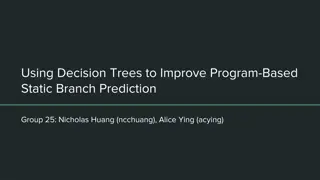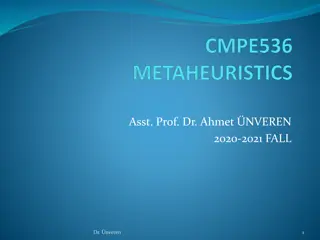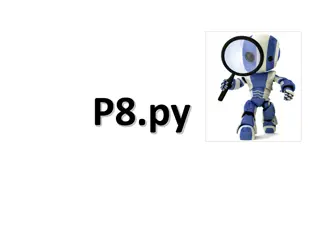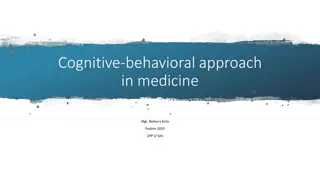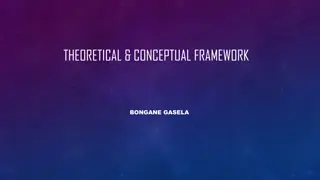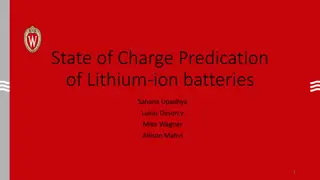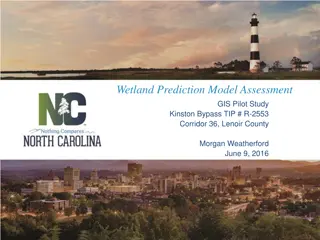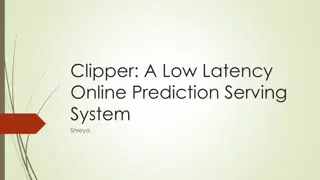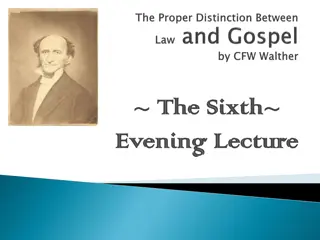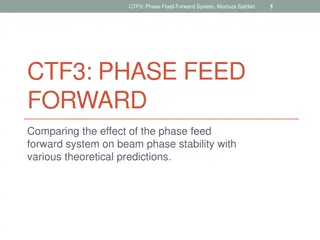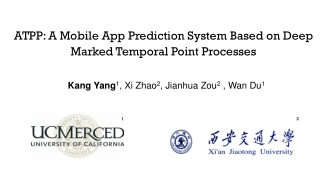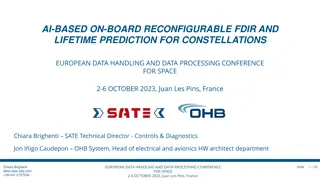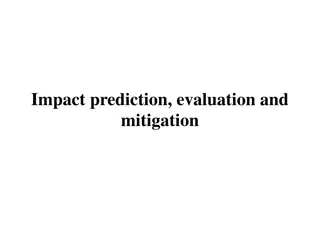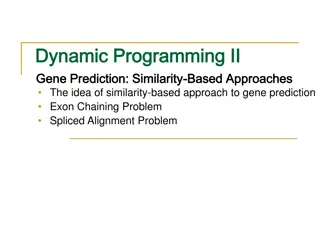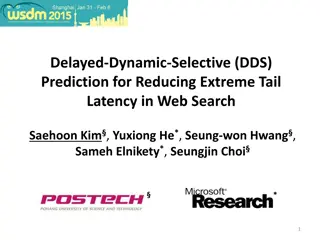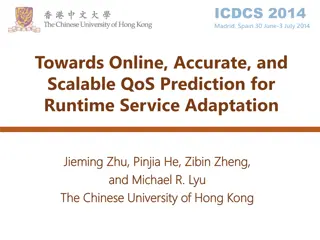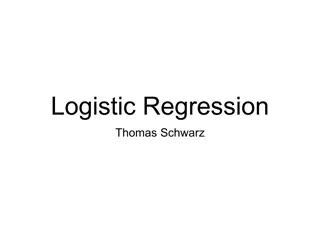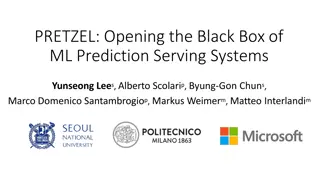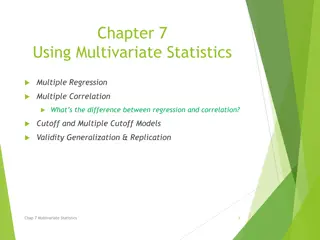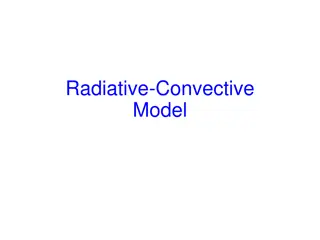Theoretical Justification of Popular Link Prediction Heuristics
This content discusses the theoretical justification of popular link prediction heuristics such as predicting connections between nodes based on common neighbors, shortest paths, and weights assigned to low-degree common neighbors. It also explores link prediction generative models and previous empirical studies supporting these prediction techniques.
Download Presentation

Please find below an Image/Link to download the presentation.
The content on the website is provided AS IS for your information and personal use only. It may not be sold, licensed, or shared on other websites without obtaining consent from the author. Download presentation by click this link. If you encounter any issues during the download, it is possible that the publisher has removed the file from their server.
E N D
Presentation Transcript
Theoretical Justification of Popular Link Prediction Heuristics Purnamrita Sarkar (UC Berkeley) Deepayan Chakrabarti (Yahoo! Research) Andrew W. Moore (Google, Inc.) 1
Link Prediction Which pair of nodes {i,j} should be connected? Alice Bob Charlie Goal: Recommend a movie
Link Prediction Which pair of nodes {i,j} should be connected? Goal: Suggest friends
Link Prediction Heuristics Predict link between nodes Connected by the shortest path With the most common neighbors (length 2 paths) More weight to low-degree common nbrs (Adamic/Adar) Alice Prolific common friends Less evidence 1000 followers Bob Less prolific Much more evidence 8 followers Charlie
Link Prediction Heuristics Predict link between nodes Connected by the shortest path With the most common neighbors (length 2 paths) More weight to low-degree common nbrs (Adamic/Adar) With more short paths (e.g. length 3 paths ) exponentially decaying weights to longer paths (Katz measure)
Previous Empirical Studies* Especially if the graph is sparse How do we justify these observations? Link prediction accuracy* Random Shortest Path Common Neighbors Adamic/Adar Ensemble of short paths *Liben-Nowell & Kleinberg, 2003; Brand, 2005; Sarkar & Moore, 2007
Link Prediction Generative Model Unit volume universe Model: 1. Nodes are uniformly distributed points in a latent space 2. This space has a distance metric 3. Points close to each other are likely to be connected in the graph Logistic distance function (Raftery+/2002) 7
Link Prediction Generative Model Higher probability of linking determines the steepness 1 radius r Model: 1. Nodes are uniformly distributed points in a latent space 2. This space has a distance metric 3. Points close to each other are likely to be connected in the graph Logistic distance function (Raftery+/2002) The problem of link prediction is to find the nearest neighbor who is not currently linked to the node. Equivalent to inferring distances in the latent space 8
Previous Empirical Studies* Especially if the graph is sparse Link prediction accuracy Random Shortest Path Common Neighbors Adamic/Adar Ensemble of short paths *Liben-Nowell & Kleinberg, 2003; Brand, 2005; Sarkar & Moore, 2007
Common Neighbors j i Pr2(i,j) = Pr(common neighbor|dij) = Pr (i, j) Pr( ~ d | ) Pr( ~ d | ) d ( P d , d | ) d d i k j k 2 ik jk ik jk ij ik jk Product of two logistic probabilities, integrated over a volume determined by dij As Logistic Step function Much easier to analyze!
Common Neighbors Everyone has same radius r Unit volume universe j i =Number of common neighbors = Pr (i, j) A(r, r, d ) 2 ij + = P A(r, r, d ) 1 2 ij N N V(r)=volume of radius r in D dims # common nbrs gives a bound on distance / 1 / 2 D D + /N /N 2 1 d 2 1 r r ij V(r) V(r) 11
Common Neighbors OPT = node closest to i MAX = node with max common neighbors with i Theorem: w.h.p dOPT dMAX dOPT + 2[ /V(1)]1/D Link prediction by common neighbors is asymptotically optimal
Common Neighbors: Distinct Radii Node k has radius rk . m i i k if dik rk (Directed graph) rk captures popularity of node k k rk j Weighted common neighbors: Predict (i,j) pairs with highest w(r) (r) # common neighbors of radius r Weight for nodes of radius r 13
Type 2 common neighbors i k j Adamic/Adar Presence of common neighbor is very informative const const Absence is very informative w(r) 1 r deg D 1/r r is close to max radius Real world graphs generally fall in this range
Previous Empirical Studies* Especially if the graph is sparse Link prediction accuracy Random Shortest Path Common Neighbors Adamic/Adar Ensemble of short paths *Liben-Nowell & Kleinberg, 2003; Brand, 2005; Sarkar & Moore, 2007
-hop Paths Common neighbors = 2 hop paths For longer paths: ( ) + dij r ( 1)r 1 - g , N, Bounds are weaker For we need >> to obtain similar bounds justifies the exponentially decaying weight given to longer paths by the Katz measure
Conclusion Three key ingredients 1. Closer points are likelier to be linked. Small World Model- Watts, Strogatz, 1998, Kleinberg 2001 2. Triangle inequality holds necessary to extend to -hop paths 3. Points are spread uniformly at random Otherwise properties will depend on location as well as distance
Summary In sparse graphs, length 3 or more paths help in prediction. Differentiating between different degrees is important For large dense graphs, common neighbors are enough Link prediction accuracy* The number of paths matters, not the length Random Shortest Path Common Neighbors Adamic/Adar Ensemble of short paths *Liben-Nowell & Kleinberg, 2003; Brand, 2005; Sarkar & Moore, 2007
Link Prediction Generative Model Higher probability of linking determines the steepness 1 radius r Two sources of randomness Point positions: uniform in D dimensional space Linkage probability: logistic with parameters , r , r and D are known The problem of link prediction is to find the nearest neighbor who is not currently linked to the node. Equivalent to inferring distances in the latent space 20
Revisiting Raftery et al.s model 1 Factor weak bound for Logistic d + + A e (V A) Pr (i, j) A c(r, D) , ij 1 1 4 2 2 Can be made tighter, as logistic approaches the step function.
Problem Statement Link Prediction Heuristics Generative model A few properties Most likely neighbor of node i ? node b node a Compare Can justify the empirical observations We also offer some new prediction algorithms 22
New Estimators Combine bounds from different radii But there might not be enough data to obtain individual bounds from each radius New sweep estimator Qr= Fraction of nodes w. radius r, which are common neighbors. 2/D c 1 E(Q ) A(r, r, d ) d 2r 1 Q V(r) N r ij ij r r Higher Qr smaller dij w.h.p
New Estimators Qr= Fraction of nodes w. radius r, which are common neighbors larger Qr smaller dij w.h.p TR: = Fraction of nodes w. radius R, which are common neighbors. 1/D c 1 + T A(R, R, d ) d 2R 1 T V(R) N R ij ij R R Smaller TR large dij w.h.p
Sweep Estimators Number of common neighbors of a given radius r TR = Fraction of nodes with radius R which are common neighbors Qr = Fraction of nodes with radius r which are common neighbors Small TR large dij Large Qr small dij
Link Prediction Which pair of nodes {i,j} should be connected? Variant: node i is given Alice Bob Charlie Friend suggestion in Facebook Movie recommendation in Netflix
Link Prediction Generative Model Raftery et al. s Model: Points close in this space are more likely to be connected. Unit volume universe Nodes are uniformly distributed in a latent space The problem of link prediction is to find the nearest neighbor who is not currently linked to the node. Equivalent to inferring distances in the latent space 27
Link Prediction Generative Model Two sources of randomness Point positions: uniform in D dimensional space Linkage probability: logistic with parameters , r , r and D are known Higher probability of linking determines the steepness 1 radius r 28
Type 2 common neighbors Example graph: N1 nodes of radius r1 and N2 nodes of radius r2 r1 << r2 2 ~ Bin[N2 , A(r2, r2, dij)] 1 ~ Bin[N1 , A(r1, r1, dij)] k j i Maximize Pr[ 1 , 2 | dij] = product of two binomials w(r1)E[ 1|d*] + w(r2) E[ 2|d*] = w(r1) 1 + w(r2) 2 RHS LHS d*
Type 2 common neighbors Jacobian A d = w(r) ij A(1 { Variance const A) Adamic/Adar Small variance Presence is more surprising const w(r) Small variance Absence is more surprising 1 r deg D 1/r r is close to max radius Real world graphs generally fall in this range
-hop Paths Common neighbors = 2 hop paths Analysis of longer paths: two components 1. Bounding E( l | dij). [ l= # l hop paths] Bounds Prl (i,j) by using triangle inequality on a series of common neighbor probabilities. 2. l E( l | dij) Triangulation
l hop Paths Common neighbors = 2 hop paths Analysis of longer paths: two components 1. Bounding E( l | dij) [ l= # l hop paths] Bounds Prl (i,j) by using triangle inequality on a series of common neighbor probabilities. 2. l E( l | dij) Bounded dependence of lon position of each node Can use McDiarmid s inequality to bound| l - E( l|dij)|
Type 2 common neighbors Example graph: N1 nodes of radius r1 and N2 nodes of radius r2 2 ~ Bin[N2 , A(r2, r2, dij)] 1 ~ Bin[N1 , A(r1, r1, dij)] k Weights j i w(r1)E[ 1|d*] + w(r2) E[ 2|d*] = w(r1) 1 + w(r2) 2 (d*=MLE) Decreasing function of d* Weighted common neighbors RHS d* Link prediction by weighted common neighbors is justified
Common Neighbors: Distinct Radii Node k has radius rk . m i i k if dik rk (Directed graph) rk captures popularity of node k k rk j 34
Common Neighbors: Distinct Radii Node k has radius rk . i k if dik rk (Directed graph) rk captures popularity of node k Type 2: i k j Type 1: i k j k k j j rj i rk i rk ri A(ri , rj ,dij) A(rk , rk ,dij) 35
Type 2 common neighbors Example graph: N1 nodes of radius r1 and N2 nodes of radius r2 1 and 2 common neighbors with these radii k Weights j i w(r1)E[ 1|d*] + w(r2) E[ 2|d*] = w(r1) 1 + w(r2) 2 (d*=MLE) Decreasing function of d* Weighted common neighbors More weighted common neighbors points are closer Useful for link prediction
-hop Paths Common neighbors = 2 hop paths Analysis of longer paths: 1. Triangulation: -hop path as a sequence of common neighbors 2. Metric property: intermediate distances linked to dij
-hop Paths Bound dij as a function of ( ) + dij r ( 1)r 1 - g , N, For we need >> to obtain similar bounds justifies the exponentially decaying weight given to longer paths by the Katz measure Also, we can obtain much tighter bounds for long paths if shorter paths are known to exist.
Higher probability of linking determines the steepness 1 39


